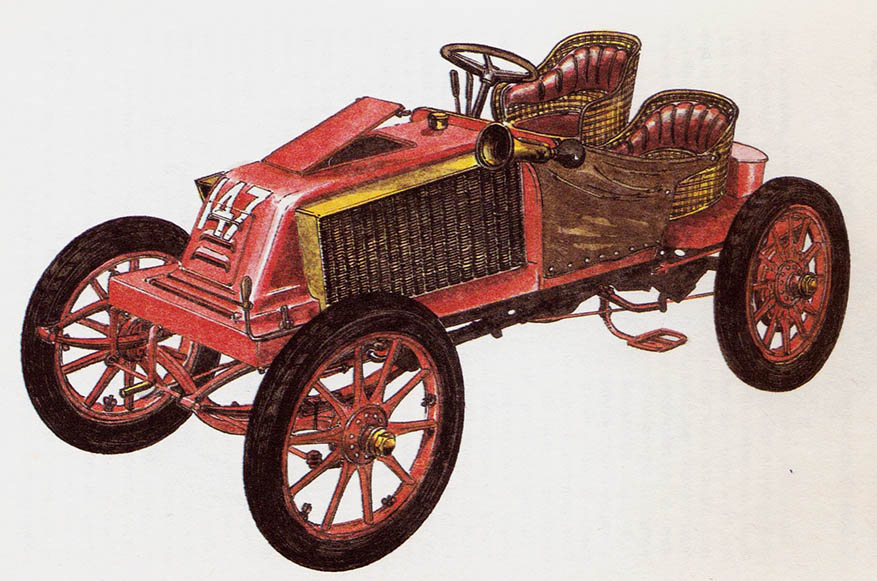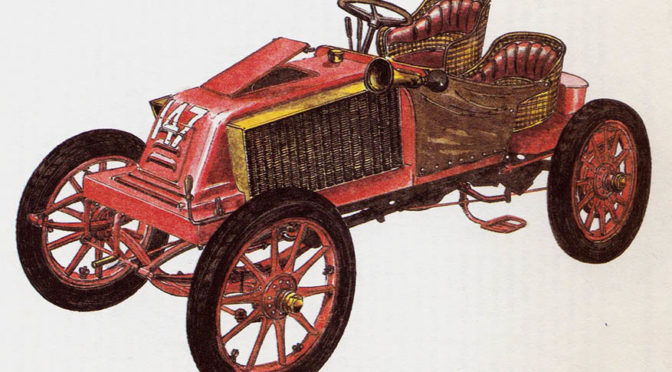RENAULT – year 1902
Renault Brothers, Billancourt, Paris, France.
Establishment in 1902 year of the French automobile club (Automobile Club of France) among other effects, it also had an impact on the design of racing cars. M. in. at that time, more precise criteria for the division of cars by weight were established. As a result, the Renault model 1902 by weight 600 kg was classified to the group of light cars with a mass ranging from 400 do 650 kg. The excellent parameters of this car ensured him victory in the greatest races of that time on the Paris-Vienna route.

Renault Brothers, Billancourt, Paris, France.
The winning car of the competitor Marcel Renault with the bib number 147 he had a flat one, steel frame with rigid axles suspended on longitudinal axles, semi-elliptical leaf springs. The car was powered by the first proprietary engine of the Renault brothers. It was a water-cooled inline four-cylinder engine with side valves. The inlet valves worked automatically. The engine had a total capacity 3758 cm3. Noteworthy was the solution of thermosiphon cooling with two radiators placed longitudinally on both sides of the engine hood, type "Alligator”, which in the following years was characteristic of this car. The engine was making power 11,8 kW (16 KM) by 1200 RPM. Power was transmitted via the cone clutch and four-speed gearbox to the rear wheels via a propeller shaft, unlike commonly used roller chains. The rigid rear axle did not have a differential, which required a special cornering technique. The passenger seat was set deeper than the driver's seat to reduce aerodynamic drag. The car reached the speed of approx 100 km/h.
Marcel Renault, having a light car, among competitors representing famous companies, he was not at all the favorite of the Paris-Vienna races, because there were very powerful cars at the start, such as the Panhard about power 51,5 kW (70 KM), Mercedes Simplex – 29,4 kW (40 KM) or Mors – winner of the Paris-Berlin races in 1901 year - with power 44,1 kW (60 KM) and many more of the total number 137 participating. Marcel Renault, starting seventh, after a daring drive and masterful cornering, he reached the Vienna Prater at the moment, when no one was expecting players yet. Its total time 26,1 hours corresponds to the average speed 62,5 km/h, which is quite a feat, considering the condition of the then roads and the mountainous profile of the route.
